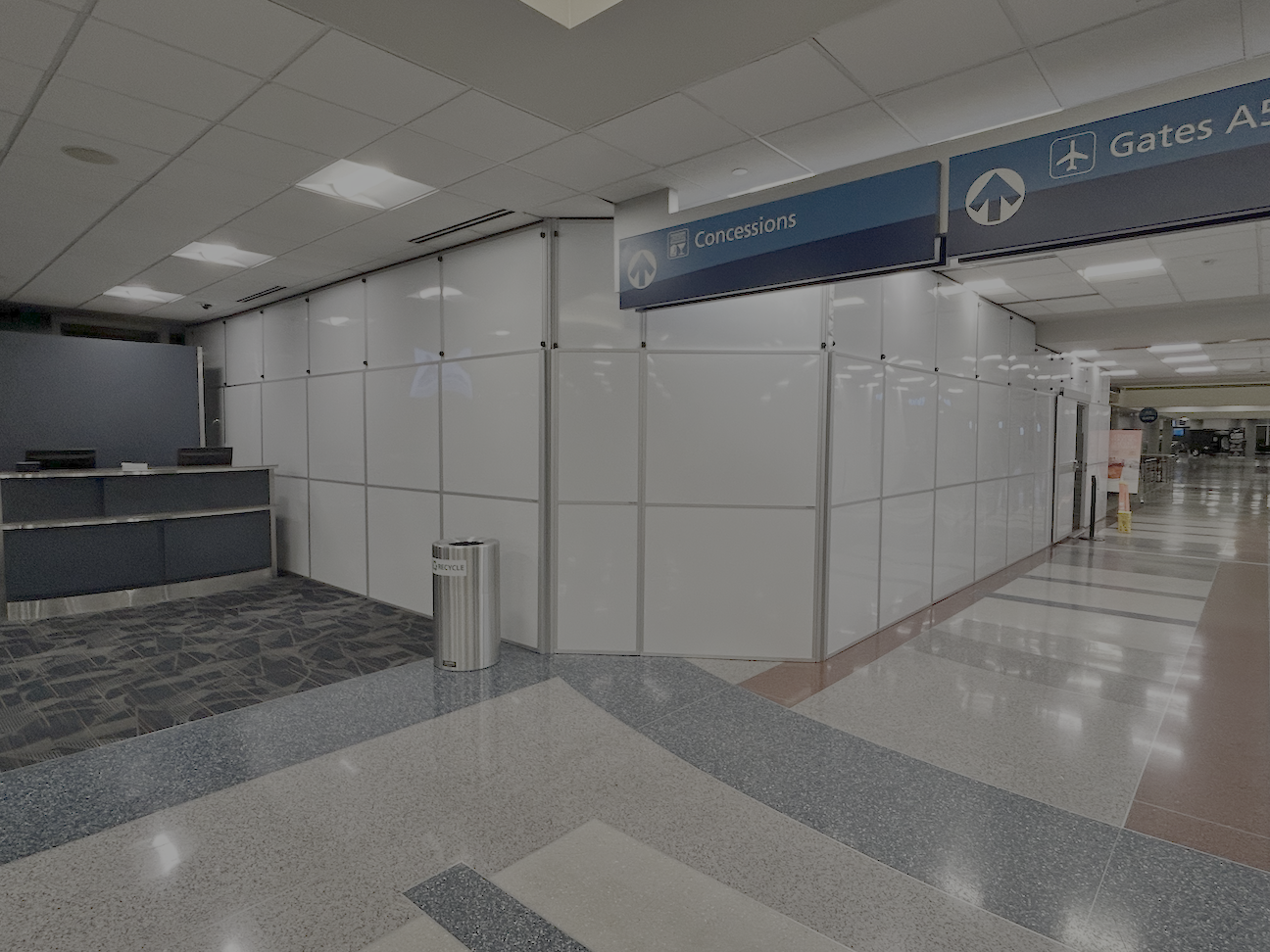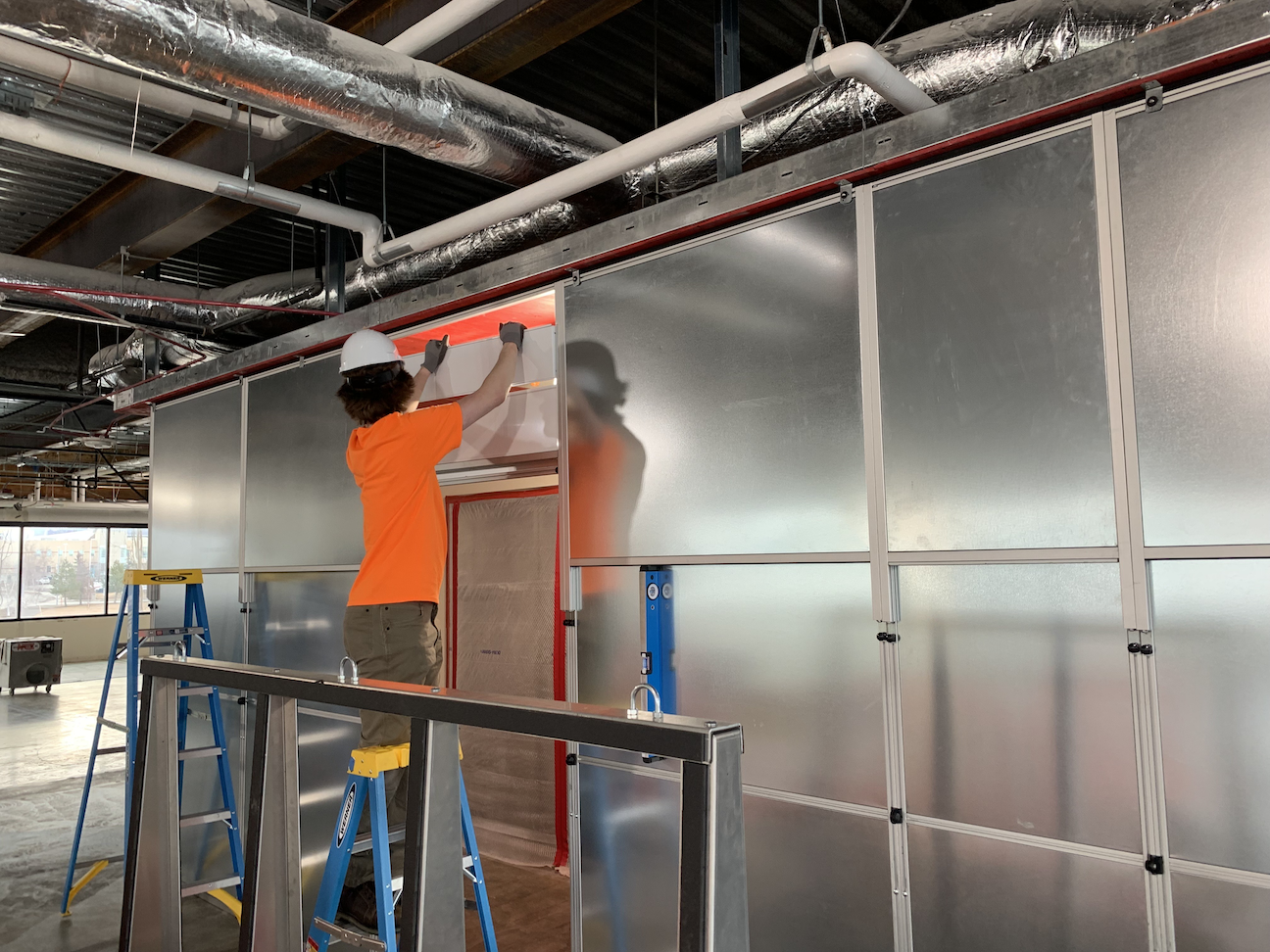Modular containment involves components such as panels coming together to create an enclosure or barrier in custom measurements. Such systems are increasingly popular due to quick, easy assembly and installation.
Fast deployment is a significant draw for managers continuously monitoring the schedule. Here are other ways construction project managers can utilize modular containment systems to stay on track.
Uses for modular containment walls
Separating work zones
Dividing active work areas from other zones is integral to safety and productivity. Heavy machinery moving materials, crew members working at height, and those using loud power tools and other equipment must maintain focus.
Barriers such as temporary walls support total situational awareness and remove physical proximity to hazards. Diffusing visual and audible disturbances keeps workers on task and reduces dangerous distractions.
The bottom line is that modular containment simplifies effective site planning. Managers can map out areas of storage, staging, active work, and more. It supports a site that completes tasks on schedule.
Controlling dust and debris
Controlling dust is essential for equipment and people’s health on and near the project. Dust collecting inside heavy machinery and equipment requires more frequent cleaning and maintenance. This increases time and labor costs and may shorten the lifespan of costly machines.
Construction dust is associated with chronic obstructive pulmonary disease (COPD), asthma, and some cancers. Those actively working in areas of high dust exposure must utilize the proper PPE, but what about everyone else?
Solid physical barriers at an appropriate height contain dust. Containment means that dust and debris do not migrate to areas where people are not required to wear protective equipment. It also reduces cleanup labor.
Additionally, where dust has long-term health impacts, debris can cause injury immediately. Restricting it to specific areas reduces trip hazards.
Deterring theft and perimeter breaches
One of the main challenges of occupied renovation is keeping civilians away from a construction site. Modular containment covers the site so one cannot wander into hazardous territory. That drastically reduces the chance of an accidental injury.
Then, there are intentional breaches. Complete concealment may also prevent losses due to theft or vandalism. Construction theft is repeatedly estimated to total $1 billion annually – a massive figure that isn’t even sure to include everything that can go missing from a site.
Many different security measures can be taken to discourage theft. The two that modular containment systems can offer are:
- Keeping materials and equipment out of sight so as not to attract the attention of would-be criminals
- Keypad locks to secure the site after hours
Why choose modular containment walls?
Temporary walls aren’t the only way to contain a site. However, they do carry these additional advantages over other standard solutions:
Privacy
Temporary chain-link fencing can make a modular perimeter, but it doesn’t offer the privacy that a solid temporary wall does. This is an essential quality for the advantages of dust containment and theft determent.
Privacy is also preferable during occupied renovations in specific industries (healthcare, hospitality) where maintaining aesthetics is essential.
Sustainability
Temporary drywall is good at controlling dust and noise but cannot be adjusted or reused for the next project phase. It usually ends up in a landfill. Wall containment systems reduce waste.
Labor costs
Fast deployment is cost-effective deployment. Other containment solutions, such as drywall, take time and resources away from the project. Even if a subcontractor handled the temporary drywall, one still wouldn’t enjoy the next benefit.
Flexibility
Modular containment is ideal for projects completed in phases. The same components safeguarding one portion of the site can be reconfigured for the next. This is true whether the project phase takes two weeks or two years.
TWS: Delivering flexible, reliable modular containment for all projects
Temporary Wall Systems (TWS) help construction managers adapt their barriers to every project stage. The ability to rent containment walls adds even more flexibility, negating the cost of a permanent investment. Learn more about the installation process for modular walls.
TWS delivers, sets up, tears down, and removes the walls according to your construction schedule. Contact us for an estimate and ask about company branding for your modular containment walls.



